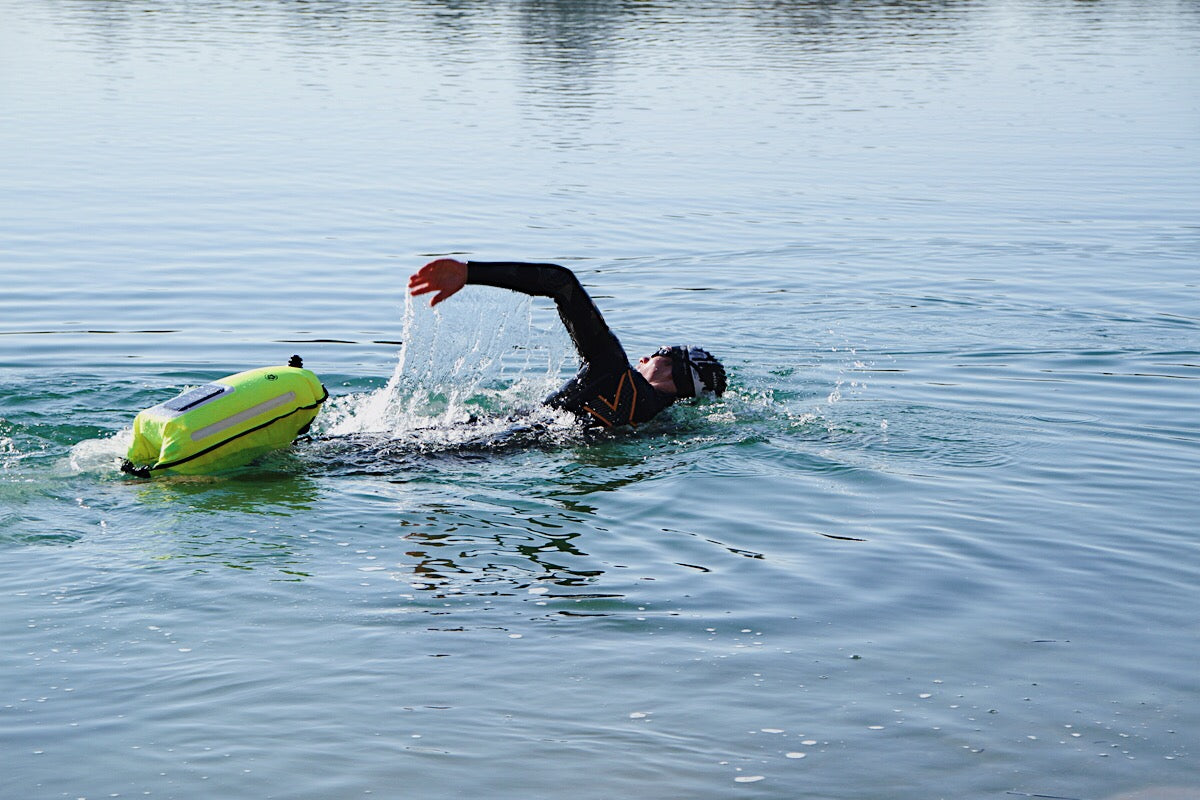Triathletes are border crossers. They want to constantly optimize their sporting performance. Of course, this includes optimal training. But of course we also want our equipment package to be optimal, from wetsuits to running shoes. The questions always arise as to whether a disc makes sense for cycling, whether the costs and benefits are in proportion and which disc is the right one for us.
Conclusion: To each his slice
For drivers who want to get the last bit out and who are not afraid of an extra investment, a disc wheel is a sensible option. In addition to the aero properties, there is the great look and the "Boller sound", which also provide additional motivation. Of course, everyone has different priorities such as price, weight, clincher or tubular tires. Even when it comes to disc wheels, there isn't one size fits all. But the selection is large enough, and if you compare a bit or get advice, there is something for everyone.
But one after the other. Let's approach the topic bit by bit.
What is a disc wheel?
A disc wheel is a wheel that is completely closed between the hub and the rim, i.e. has a continuous surface.
Why is a disc wheel better or faster?
The aim is to achieve an air flow that is affected as little as possible by turbulence. If there is no wind at all (e.g. on the track), the tire is the only part of the wheel that is fully hit by the – until then undisturbed – wind. In this case, there are rarely major differences between individual wheels in terms of aerodynamics.
That's why it doesn't make sense to test the aerodynamics of wheels on the track, because there's very seldom absolutely no wind on the road.
Wind from the side brings advantages
If the wind hits the impeller at a certain angle (yaw angle), it must flow over the impeller. The air not only flows over the impeller, but also through the spokes.
And it is precisely this flow that is not possible with a disc wheel. The disc wheel offers a closed surface that enables optimal air flow. The stronger the wind comes from the side, the greater the advantage of a disc wheel.
Modern aero wheels are often no worse than disc wheels at low yaw angles , but usually have their so-called stall angle at around 16 degrees . This means that when the wind blows more from the side, you become aerodynamically worse again.
But wind is not just wind
A disc wheel sometimes has no stall angle or one that is so large that it is hardly realistic in practice. The decisive factor is not the wind direction, but the wind acting on the driver (vector calculation, see image). Since the driver is moving forward, the headwind must be combined with the meteorological wind direction.
Disc wheel glossary
- yaw angle: effective angle of attack of the air (calculated from the driver's speed, wind force and wind direction - see also image)
- stall angle: maximum angle of attack at which the impeller is still aerodynamically efficient. If the angle of attack is greater than the stall angle, the aerodynamics of the impeller deteriorate.
Does a disc wheel always make sense for everyone?
It's not a clear no. As described, a disc wheel is most effective when I really don't want to use it at all: in cross winds.
For light, delicate athletes, it is therefore important to weigh up carefully whether a disc wheel makes sense, since the lateral forces from the wind can become very large and thus have a negative impact on handling. Therefore disc wheels are also forbidden at the Ironman Hawaii. A disc wheel is usually also heavier than a conventional wheel or an aero wheel, so using a disc on very bumpy or mountainous routes often does not make sense.
No discs on the mountain?
Disc wheels are relatively rare on mountainous routes. Speeds are usually so low uphill that weight is more important than aerodynamics. In addition, at low speeds the influence of the cross wind increases again, so that even a disc wheel can sometimes no longer exploit its aerodynamic advantages. But... where things go up, things usually go down again. A disc has massive advantages downhill and can at least partially compensate for the time lost from the ascent.
Usually the quickest choice
A disc wheel should therefore never be the basic equipment in the arsenal, but rather something that enhances an existing aero wheelset. On relatively flat Ironman courses like Roth or Frankfurt it is definitely the fastest choice.
rule of thumb
Use the best aerodynamic wheel, which you can handle well in windy conditions, as long as you don't have to ride mostly climbs with more than 7 to 8 percent. Only then is lower weight more important or decisive.
Disc wheel shapes – flat or lenticular
There are two basic forms of disc wheels. Either disc wheels are produced completely flat. Or they are built lens-shaped. It has been discussed for years which disc shape is better or more aerodynamic. There is no clear answer to this question. The lenticular disc wheels are said to be better at dissipating leg turbulence and are better at very large yaw angles as the wind can slide down you.
Where are the differences
Why are there disc wheels that cost 900 euros and which ones cost 2500 euros? Now some will surely come out of your holes who claim that with some manufacturers you only pay for the name, or the prices are completely exorbitant.
The differences are not always obvious
Why does a Porsche cost more than a Toyota? Even if Porsche demands something for the name, they have to work it out first. And just like in all other sectors, there are also differences in the material, processing, quality, development and much more in cycling, and last but not least in the performance provided.
ZIPP 900/ZIPP Super 9: dimples for the golf ball effect
The Zipp discs are flat discs. In this case, there is a honeycomb structure between the outer layers of carbon, which gives the rim stability and strength. (honeycomb construction)
The carbon layers are additionally provided with a golf ball-like profile (dimples). These should first of all increase the air turbulence very close to the wheel and, in contrast, bring the air flow closer together behind the disc. In addition, the inflowing air glides over these vortices instead of over the impeller, and since the friction between air and air is even lower than between air and a body, these impellers are even a bit faster.
Another effect: The so-called "dead zone" behind the wheel is thereby reduced. This "dead zone" contains a large number of small air turbulences, which generate negative pressure due to the movement and pull the pane backwards, in the opposite direction to the direction of travel, like a vacuum cleaner. Therefore, the smaller the dead zone, the lower the suction effect and the less the speed of the disc is slowed down. Due to the dimples in a golf ball, the flight distance of such a ball can be increased up to four times with the same impact power... mind you with a golf ball.
The Zipp discs can be found in the upper price segment of the discs, but they also have some special features to offer.
cake slices
The Zipp's carbon mats are arranged in segments, similar to slices of pie. This process means that several of the carbon fibers are optimally positioned for the force distribution between the hub and the rim. Since carbon fibers can only absorb very high forces in the direction of pull, this is crucial for power transmission. With some cheaper disc wheels you often only see the well-known grid-like pattern made of carbon fibers, which has good all-round properties, but is not designed to be as load-specific, which is paid for by more material used (higher weight) or poorer power transmission / stiffness.
Reynolds: clincher version also made of carbon
The Reynolds disc runs in the outer layer with unidirectional carbon. This means that the fibers are not arranged in the lattice structure mentioned, but only run in one direction. If this direction is adapted to the course of the force, very high forces can be transmitted (e.g. also used in frame construction).
Between the top mats there is also a filling in the form of a foam core, which provides additional strength. The lens-shaped disc is more affordable at around 1,400 euros and is available for both tubular tires and clincher tires.
All carbon
Since the clincher version is also made entirely of carbon and does not rely on gluing with aluminum rims, the Reynolds is a good tip for drivers who do not want to glue their tires. With carbon rim flanges, however, it is better to avoid large potholes, as there are no problems that can arise from the combination of carbon and aluminum. Since carbon and aluminum have fundamentally different material properties and both materials expand differently when heated.




















